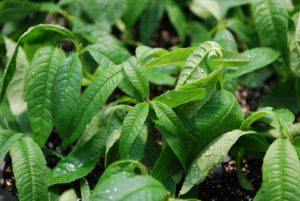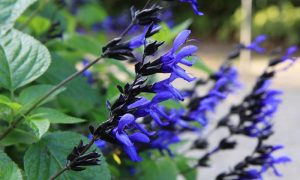If you guys are like me, you started your gardening career with a focus on annual crops. Tomatoes, cucumbers, lettuce, even zinnias and snapdragons – their short life span makes them easy and approachable things to grow.
It’s taken me a few years to realize that perennial plants can be just as easy, and in many cases, even more rewarding. Unlike annuals, you don’t have to worry about babying them along for their first delicate stage of life. Each year they get bigger, more robust, and more able to withstand the elements. Depending on the plant, even if above ground growth has slowed, there is a vast root system that grows deeper with time. This means that the plant can tolerate so many hardships that shallow-rooted annual plants wouldn’t be able to live through. Freezes, drought, even el Niño winters – the perennials will be fine.
So I recommend you start adding some perennials to your annual garden. In early spring when you’re craving fresh food and flowers, they’ll provide for you while the ground is still warming up for your other crops. Here are some of my favorites that do great in our weird Sonoma County winters, are relatively easy to grow, and add some pop to the garden.
Lemon Verbena

The first time I saw (and more importantly, smelled!) Lemon Verbena, I was 18 and travelling in the Middle East. Someone pointed out the plant, told me the Hebrew name, and suggested I put a few leaves in a cup of boiling water for a simple tea. I tried it and was hooked! I think I made that tea every single day I was there.
Imagine my surprise 10 years later to move to Santa Cruz and find it growing in gardens all across town. It wasn’t some exotic Middle Eastern plant after all, but a relatively quick-growing, easy, beautiful Mediterranean-loving woody shrub.
Lemon Verbena can get quite big if you let it – turning into a massive chartreuse shrub in summer that is covered in small white flowers that fade to brown. I use the flowering stems in flower bouquets, and the leaves in everything from tea, to fish, to infuse into a batch of homemade limoncello.
It’s best to grow Lemon Verbena by buying transplants or taking cuttings from established plants in summertime. It loves sun and well-drained soil, moderate water, and some balanced fertilizer a few times a year (though too much will make the plant long and leggy). In winter you can cut it down to a few feet from the ground.
Cardoons

It took me a while to grasp the beauty and usefulness of the cardoon. While it looks like a plant full of baby artichokes, it’s grown for the tender stalks rather than the flower buds themselves. I do, however, use the gorgeous green and purple flower buds in floral arrangements – people love them!
You can start cardoons from seed in mid-winter and baby them along in the greenhouse or on a windowsill until it has warmed up a bit outside and the ground is dry enough for planting. They love full sun, rich soil, and plenty of water, though they’ll get by in marginal conditions (they just won’t grow as big or robust).
Much like rhubarb or celery, cardoon stems can be really tough and stringy. A great trick is to wrap the bottom foot or so of the stem in cardboard, milk cartons, or burlap for a good 4 – 6 weeks while still growing in the ground. This acts to blanch the stem and take out some bitterness. Then, after harvesting in the fall, you can boil the stems for 30 – 45 minutes before using in any recipe. Delicious.
Salvia

Where to begin on salvias? There are so many to choose from, over 900 in fact, and they span a broad range of plant types from annuals, to perennials, to shrubs. There are some common salvias that every Californian would recognize – Salvia Leucantha or the ‘Burger King’ Salvia, thus nicknamed because it’s spiky soft bright purple flowers grow so vigorously that they’re planted outside of fast food chains up and down 101.
I suggest planting some salvias that feature bold bright colors to attract birds and insects, are cold hardy enough to perennialize in our climate, and thrive under even dry conditions. Some favorites in this category are Salvia Guaranitica ‘Black and Blue’ – a rich dark blue that hummingbirds love – and Salvia Coccinea ‘Lady in Red’ – some bright red contrast that butterflies will adore. Both of these can be pruned back hard in the winter, and will flower for years to come. To browse more salvia varieties, check out this helpful article from Better Homes and Gardens.
What are your favorite perennials to grow?







 Family
Family

